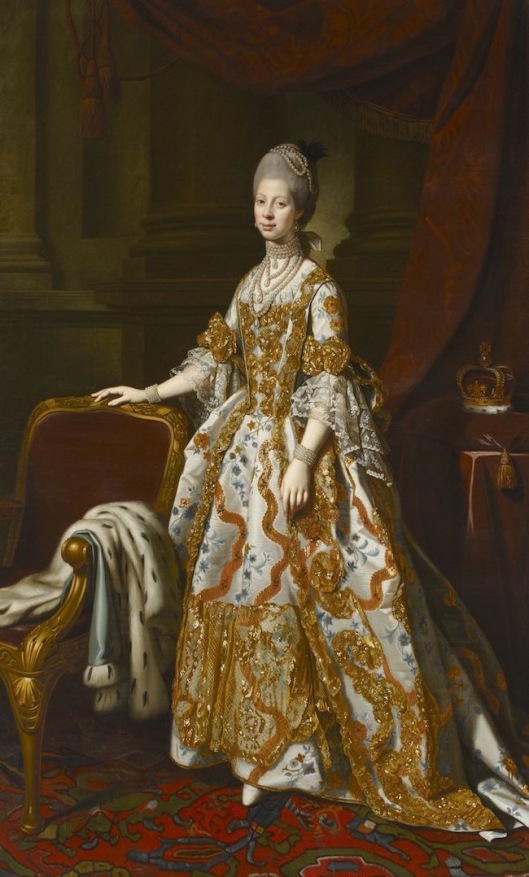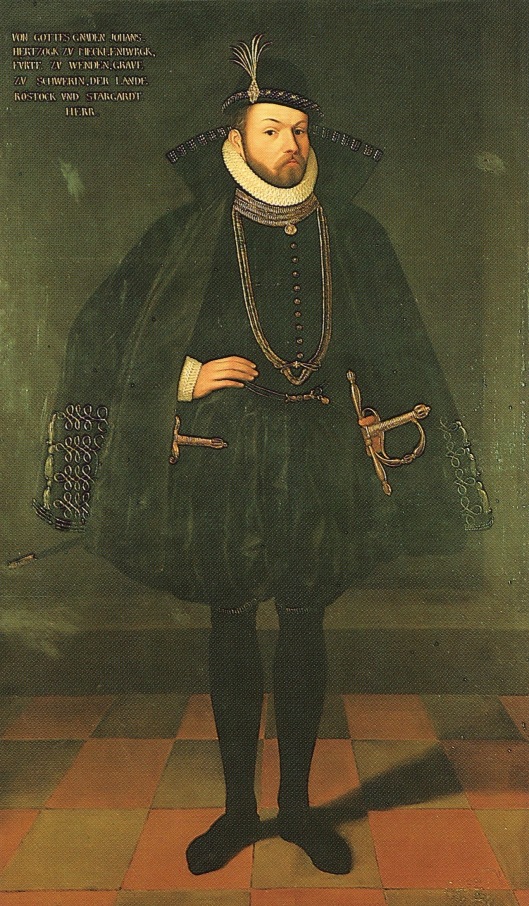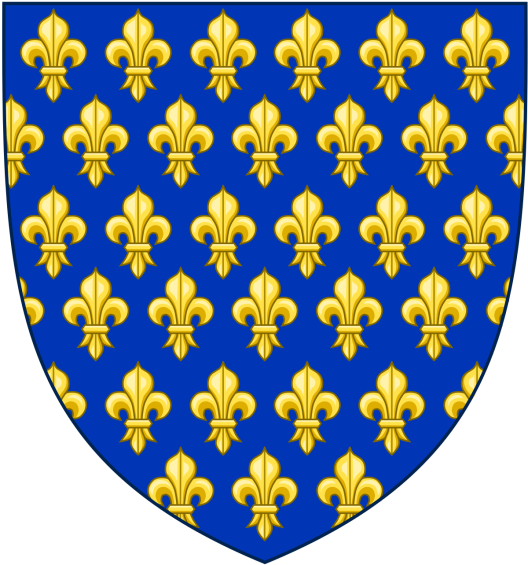Tags
Adolf Friedrich II of Mecklenburg-Strelitz, Adolf-Friedrich VI of Mecklenburg-Strelitz., Charlotte Sophia of Mecklenburg- Strelitz, Congress of Vienna, Frederick Francis IV of Mecklenburg-Schwerin, Frederick William III of Prussia, German Empire, Grand Duchy of Mecklenburg-Schwerin, Grand Duchy of Mecklenburg-Strelitz, Intermarriage, Louise of Mecklenburg-Strelitz
In 1695, the Mecklenburg-Güstrow branch of the House of Mecklenburg became extinct with the death of Duke Gustaf-Adolph of Mecklenburg-Güstrow.
After more than five years of dispute over succession to the House of Mecklenburg, the Duchy of Mecklenburg-Strelitz was established in 1701 in the territory of the former duchy of Mecklenburg-Güstrow. With the death of Duke Gustaf-Adolph in 1695, Duke Friedrich-Wilhelm of Mecklenburg-Schwerin claimed heirship, a move which his uncle, Prince Adolf-Friedrich strongly opposed. Adolf-Friedrich, was the husband of Marie of Mecklenburg-Güstrow, the daughter of Duke Gustaf-Adolph, strengthening his claim to the territory. The emissaries of the Lower Saxon Circle finally negotiated a compromise on March 8, 1701.

Adolf-Friedrich II, Duke of Mecklenburg-Strelitz
The agreement they reached created the final, definitive division of Mecklenburg and was sealed with the 1701 Treaty of Hamburg. Section 2 of the treaty established Mecklenburg-Strelitz as a duchy in its own right and assigned it to Adolf-Friedrich (Duke Adolf-Friedrich II) together with the Principality of Ratzeburg on the western border of Mecklenburg south of Lübeck, the Herrschaft Stargard in the southeast of Mecklenburg, with the cities of Neubrandenburg, Friedland, Woldegk, Strelitz, Burg Stargard, Fürstenberg/Havel and Wesenberg, and the commandries of Mirow and Nemerow.
At the same time the principle of primogeniture was reasserted, and the right to summon the joint Landtag was reserved to the Duke of Mecklenburg-Schwerin. The 1701 provisions were maintained with minor changes until the end of the monarchy. Both parties continued to call themselves Dukes of Mecklenburg; Adolf-Friedrich II took his residence at Strelitz. Mecklenburg-Strelitz was a part of the Holy Roman Empire.
Adolf-Friedrich II (October 19, 1658 – May 12, 1708), was born in Grabow as the posthumous son of Duke Adolf-Friedrich I of Mecklenburg and his second wife, Maria Katharina of Brunswick-Dannenberg (1616–1665).
In 1684 Adolf-Friedrich II married firstly to his cousin Princess Maria of Mecklenburg-Güstrow (1659 – 1701), daughter of Gustaf-Adolph, Duke of Mecklenburg-Güstrow. They had five children:
* Adolf-Friedrich III, Duke of Mecklenburg-Strelitz (1686 – 1752).
* Duchess Magdalena Amalia of Mecklenburg-Strelitz (1689 – 1689).
* Duchess Maria of Mecklenburg-Strelitz (born and died August 1690).
* Duchess Eleonore Wilhelmina of Mecklenburg-Strelitz (born and died, July 1691)
* Duchess Gustave Caroline of Mecklenburg-Strelitz (1694 – 1748) she married Christian Ludwig II, Duke of Mecklenburg-Schwerin.
On June 20, 1702, Adolf-Friedrich II married secondly to Princess Johanna of Saxe-Gotha (1680 – 1704), a daughter of Friedrich I, Duke of Saxe-Gotha-Altenburg, and Magdalena-Sybille of Saxe-Weissenfels. There were no children from this marriage.
On June 11, 1705 at Neustrelitz, Adolf-Friedrich II married thirdly to Princess Christiane Emilie of Schwarzburg-Sondershausen, a daughter of Christian-Wilhelm I, Prince of Schwarzburg-Sondershausen and Countess Antonie-Sybille of Barby-Mühlingen (1641–1684).
They had two children:
* Duchess Sophia Christina Louise of Mecklenburg-Strelitz (1706 – 1708).
* Duke Charles I Ludwig Friedrich of Mecklenburg-Strelitz (1708 – 1752), Prince of Mirow.
Through his granddaughter Charlotte, Adolf-Friedrich II is the ancestor of every British monarch beginning with George IV, who ascended the throne of the United Kingdom in 1820.
The Strelitz duchy remained one of the most backward regions of the Empire. Nevertheless, its princesses achieved prominent marriages: Princess Charlotte of Mecklenburg-Strelitz, sister of Duke Adolf-Friedrich IV, married King George III of Great Britain in 1761, thus becoming queen consort of Great Britain.

Princess Charlotte of Mecklenburg-Strelitz, Queen of Great Britain
Her niece Princess Louise of Mecklenburg-Strelitz, daughter of Duke Charles II, Grand Duke of Mecklenburg, married Friedrich-Wilhelm III of Prussia in 1793 and became queen consort of Prussia in 1797. Her other niece, Louise’s sister, Princess Friederike of Mecklenburg-Strelitz married in 1815 Prince Ernst-Agust, Duke of Cumberland, who, in 1837, became King of Hanover, making her queen consort of Hanover.

Louise of Mecklenburg-Strelitz, Queen of Prussia

Princess Friederike of Mecklenburg-Strelitz
House of Mecklenburg-Strelitz
Mecklenburg-Strelitz adopted the constitution of the sister duchy in September 1755. In 1806 it was spared the infliction of a French occupation through the good offices of the king of Bavaria. In 1808 its duke, Charles (d. 1816), joined the Confederation of the Rhine, but in 1813 he withdrew from it. The Congress of Vienna recognized both Mecklenburg-Strelitz and Mecklenburg-Schwerin as Grand Duchies and members of the German Confederation. In 1871 Both Grand Duchies became part of the German Empire.
Following the 1918 suicide of Grand Duke Adolf-Friedrich VI of Mecklenburg-Strelitz, (this occurred prior to the abolition of the monarchy) Grand Duke Friedrich-Franz IV of Mecklenburg-Schwerin took up the regency of Strelitz. This happened because the heir presumptive Duke Charles-Michael was serving in the Russian Army at the time and had indicated that he wished to renounce his succession rights. Grand Duke Friedrich-Franz IV abdicated the grand ducal throne on November 14, 1918 following the German Empire’s defeat in World War I; the regency ended at the same time.
After his abdication, he was initially not allowed to live in Mecklenburg and had to move to Denmark. A year later, he was permitted to return. He recovered some of his former properties and occupied some of his former homes. Grand Duke Friedrich-Franz IV died on November 17, 1945 in Flensburg after being arrested by No6 RAF Security section on November 9, 1945. He was succeeded as head of the grand ducal house by his son Hereditary Grand Duke Friedrich-Franz V.
In May 1931 against the will of his father, Hereditary Grand Duke Friedrich-Franz of Mecklenburg-Schwerin joined the SS and by 1936 he had been promoted to the rank of Hauptsturmführer (Captain).
He was posted to Denmark during World War II where he worked at the German embassy as a personal aide to Werner Best. He spent the summer months of 1944 serving with the Waffen-SS tank corps.
In May 1943, a family council was called by the Grand Ducal family and Friedrich Franz was passed over as heir in favour of his younger brother Duke Christian-Ludwig (III), who would instead inherit the family property.
On July 5, 1954 in Glücksburg, Christian-Ludwig married in a civil wedding Princess Barbara of Prussia, daughter of Prince Sigismund of Prussia and Princess Charlotte of Saxe-Altenburg. They married in a religious ceremony on 11 July 1954. They had two daughters. Friedrich Franz, Hereditary Grand Duke of Mecklenburg-Schwerin
With the extinction of Schwerin branch, with the death of Christian-Ludwig (III), Mecklenburg-Strelitz is now the only surviving branch of the Grand Ducal house in the male line. The current head of this house is Borwin, Duke of Mecklenburg. His grandfather was Count Georg of Carlow, the morganatic son of Duke George Alexander of Mecklenburg (1859–1909).
Duke Georg (II) was adopted in 1928 by his uncle Duke Charles-Michael of Mecklenburg, the head of the House of Mecklenburg-Strelitz. He then assumed the title and style of “His Serene Highness The Duke of Mecklenburg”, which was confirmed by the head of the Imperial House of Russia, Grand Duke Cyril Vladimirovich on July 18, 1929 and recognized on December 23, by Grand Duke Friedrich-Franz IV of Mecklenburg-Schwerin. He succeeded his uncle as head of the house on December 6, 1934 and was granted the style of Highness on 18 December 18, 1950.
In addition to Duke Borwin, the current members of the House of Mecklenburg-Strelitz are his wife Duchess Alice (née Wagner; born 1959); their children Duchess Olga (born 1988), the Dukes Alexander (born 1991) and Michael (born 1994); and his sisters, the Duchesses Elisabeth -Christine (born 1947), Marie Catherine (born 1949) and Irene (born 1952).
The lines of Mecklenburg-Schwerin and Mecklenburg-Güstrow did briefly intermarry. Once the establishment of the Duchy of Mecklenburg-Strelitz the only intermarriages of the Strelitz line had was with the Mecklenburg-Güstrow line was in the beginning in 1684 when Adolf-Friedrich II married Princess Maria of Mecklenburg-Güstrow (1659 – January 1701), daughter of Gustaf-Adolph, Duke of Mecklenburg-Güstrow.
The singular marriage between the Schwerin line and the Strelitz line was when Duchess Gustave-Caroline of Mecklenburg-Strelitz (1694 – 1748), daughter of Adolf-Friedrich II and Princess Maria of Mecklenburg-Güstrow (1659 – 1701), daughter of Gustaf-Adolph, Duke of Mecklenburg-Güstrow – married Christian-Ludwig II, Duke of Mecklenburg-Schwerin.
After that there was no intermarriage between the Schwerin and Strelitz lines.

































